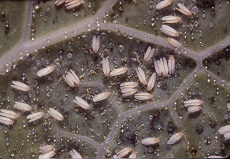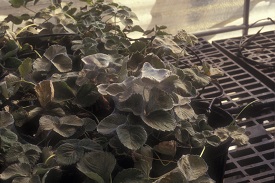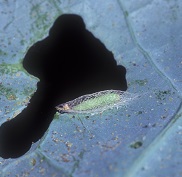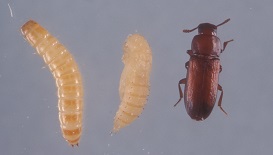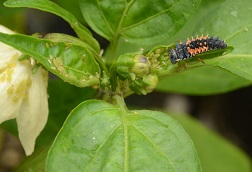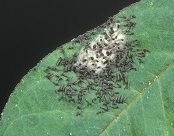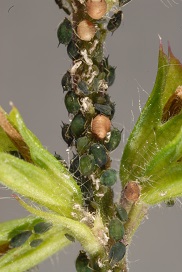June 6th is World Pest Day. And what better way to “celebrate” the pests which eat our crops than to expose their wicked ways. We should be aware that, around the world, we all fight some of the same insect pests. The following are the 10 most common plant crop pest insects worldwide. You may even have seen several of these in your own garden or on the farm. Scouting is our early line of defense. Notice that 4 out of the 10 pests are cotton-eating insects! However, only 2 of the 10 listed are not a problem in North America.
- Cotton Bollworm, Helicoverpa armigera, is a pest of cotton and chickpeas on 5 continents. Cotton is one of the most common agricultural crops in the sub-tropical growing zone throughout the world. While this pest is not necessarily a problem in the United States, other cotton pests are. The southern United States has many restrictions and quarantines regarding cotton agriculture. The University of Florida’s Institute of Food and Agricultural Sciences Electronic Data Information Source (UF/IFAS EDIS) has a topic page of “Cotton Insect Pest” publications.

Tiny clusters of whitefiles, eggs, and dew on the underside of a leaf. UF/IFAS Entnem Department Photo by Castner
- Tobacco Whitefly (Bemisia tabaci). Bemisia tabaci is one of the most pestiferous insects found worldwide. Additionally, it is polyphagous- meaning it eats numerous different plant species, and not just ornamental plants. The UF/IFAS EDIS publication “Management of Whiteflies,…in Tomato Production” is worth the read as it details the life cycle of whitefly, how they spread plant disease, as well as how to control them and on which weeds they overwinter. Scout for these pests by flipping plant leaves often to catch them early.
-

Webbing of a sever spider mite infestation on a strawberry plant in a greenhouse. UF/IFAS Entnem Department Photo by Lyle Buss Two-spotted Spider Mite (Tetranychus urticae)- This mite’s Latin name even sounds itchy. The Two-spotted Spider Mite species was thought to be a problem only for northern gardeners. But now we know it also likes the subtropics. There are other species of spider mites which also afflict crops in Florida, so do your research to see how best to treat mites in the garden. UF/IFAS EDIS has a “Spider Mite Topic Page” to read more about spider mite pests in Florida.
- “Diamondback moth (Plutella xylostella)” is the UF/IFAS EDIS publication with

Pale green 9mm-long pupa of a Diamondback moth in its lacy silk case on a Brassica leaf. UF/IFAS Entnem Department Photo collection. information on this pest. It is the caterpillar which does the crop damage. This larvae is a pest of Brassicas, such as cabbage and Kale. The final larval instar is small- not more than 9 mm in length. It is pale green with a distinctive diamond shape on its back. However, because it closely matches the color of most Brassica leaves, it is difficult to spot until there is leaf damage. The adult moth is roughly ½-inch long and nocturnal. She lays her eggs on the underside of Brassica leaves. Again, flip the leaves of your crop plants often to scout for this pest.
- Taro Caterpillar (Spodoptera litura). We have probably all seen the adult moths flying round our outdoor lighting in the warmer months. They lay their eggs on many different crops, including beans, peppers, tomatoes, Alocasia (Taro), eggplant, basella (Malabar Spinach), and more. This pest is listed in the UF/IFAS EDIS publication,

Red flour beetle larva, pupa, and adult. UF/IFAS Entnem Department Photo collection, Lyle Buss
- Red Flour Beetle (Tribolium castaneum) This is mainly a pest of wheat and other stored grain. These tiny beetles are red-brown and 3-4 mm long (1/8th inch). The UF/IFAS EDIS publication, “Stored Product Pest Insects”, will give you more

Green Peach Aphids on a Jalapeno pepper plant. The larger insect is a Ladybug nymph (immature), which is a predator of aphids and other pest insects. UF/IFAS Entnem Department Photo by Lyle Buss information on these insects pests of stored grain and “Confused Flour Beetle, Tribolium confusum and Red Flour Beetle, Tribolium castaneum” is another UF/IFAS EDIS publication which deals with these pests.
- “Green Peach Aphid (Myzus persicae)…”, is the UF/IFAS EDIS publication which will give you photo for identifying, host plant list, and biological controls. These pests feed on hundreds of different plant species. Adding to the puzzle irradication, they also like some weeds as host plants, making it difficult to rid the landscape of this pest. But there are many “Good bugs” which attack these pests. This photo shows a ladybug nymph feasting on the aphids.
-

Hundreds of miniscule fall army worms congregated on a host-plant leaf near their egg cluster. UF/IFAS Entnem Department Photo by Castner “Fall Armyworm (Spodoptera frugiperda)”, is the UF/IFAS EDIS publication with information on this pest. These little larva of a nocturnal moth can decimate a tomato plant of its leaves overnight. Scout for eggs laid in clusters under the leaves. They also like cotton, corn, potatoes, and up to 80 other species of host plants.

Cotton aphids congregated on the flower spike of a Salvia plant. UF/IFAS Entnem Department Photo by Lyle Buss
- Cotton Aphid (Aphis gossypii), also called the melon aphid. These range from tropical to temperate growing zones. They eat as many as 700 different host plants worldwide, including cotton, citrus, beans, carrots, etc. Catalpa spp. and rose of Sharon, hibiscus syriacus, are their overwintering host plant in temperate climates. These insects will cover whole stems of vegetable plants overnight, sucking the life out of them. For more reading on this pest, please see the UF/IFAS EDIS publication “Melon Aphid or Cotton Aphid, Aphis gossypii”
- Brown Planthopper (Nilaparvata lugens) is a rice pest in Asia and Oceania. Rice is an important food crop for over half the world, making this pest extremely dangerous to the agriculture of these areas. This insect is not a problem in the United States.
The University of Florida’s Institute of Food and Agricultural Sciences Electronic Data Information Source (UF/IFAS EDIS) has many other crop pest publications. If you live in Florida and are having pest insect issues with your plants, UF/IFAS EDIS website is the go-to place for information and solutions to these destructive insects infestations.
 3
3
